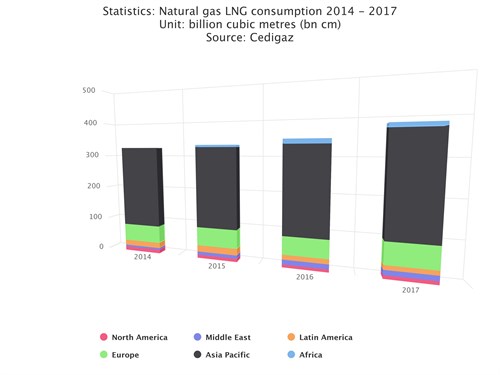New oil, gas projects to accelerate next year: report
LONDON (Reuters) - The number of new oil and gas projects will rise five-fold next year from a 2015 trough but overall spending is still unlikely to be enough to meet future demand, consultancy Wood Mackenzie said in a report.
Shaken by a sharp drop in oil prices in recent months, boards are generally expected to stick to spending discipline imposed following the 2014 price crash.
Global investment in oil and gas production, known as upstream, is expected to reach around $425 billion next year, according to WoodMac analyst Angus Rodger.
That compares with a total spending of $770 billion in 2014, which dropped to $400 billion in 2016 and 2017.
Although spending levels have slightly recovered since then, next year’s capital expenditure will still fall short of the $600 billion required to meet demand growth and to offset the natural decline of output from fields, Rodger told Reuters.
A handful of the world’s top oil companies, including U.S. giants Exxon Mobil and Chevron, said they would boost spending next year as they accelerate developments of highly-productive shale fields.
But overall, companies will seek to maintain spending largely flat in order to return cash to investors after years of pain, Rodger said.
Still, deep cost cuts introduced in recent years and lower rates for drilling rigs and services mean that companies can do more with their money.
In 2019, the number of large new oil and gas projects is expected to reach up to 50, compared with 40 in 2018, and around 10 in 2015, according to WoodMac’s 2019 outlook. Large projects hold over 50 million barrels of oil or gas equivalent.
Many of the new projects will be around gas, with a record number of liquefied natural gas (LNG) projects set to get the green light in 2019.
Those include the Arctic LNG-2 in Russia, at least one project in Mozambique and three in the United States, which would together require $50 billion, according to the report.
“The stars are aligning on LNG sales contracts, corporate appetite, long-term demand and costs. But these are huge investments, and investor confidence could waver if we see signs
of cost inflation, global recession and falling prices.”
The LNG projects will target 100 trillion cubic feet of gas, up from 80 tcf in 2019 and 32 tcf in 2017.
Spending could see a strong increase in 2020 if oil prices continue rising steadily and as rig costs are expected to rise, Rodger said.

- ExxonMobil halts 1-Bft3d blue hydrogen project in Texas
- Aramco and Yokogawa commission multiple autonomous control AI agents at Fadhili gas plant
- Ukraine will resume gas imports via Transbalkan route in November
- Mitsubishi to inject $260 MM into Brunei LNG project
- Freeport LNG (U.S.) on track to take in more natgas on Thursday after unit outage




Comments